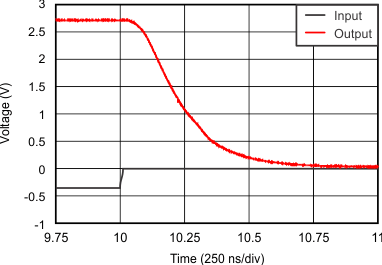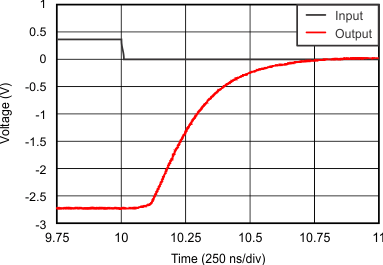ZHCSCS6B September 2014 – December 2018 OPA2320-Q1 , OPA320-Q1
PRODUCTION DATA.
7.3.6 Overload Recovery Time
Overload recovery time is the time it takes the output of the amplifier to come out of saturation and recover to the linear region. Overload recovery is particularly important in applications where small signals must be amplified in the presence of large transients. Figure 33 and Figure 34 show the positive and negative overload recovery times of the OPAx320-Q1, respectively. In both cases, the time elapsed before the OPAx320-Q1 come out of saturation is less than 100 ns. In addition, the symmetry between the positive and negative recovery times allows excellent signal rectification without distortion of the output signal.

| VS = ±2.75 V, G = –10 V/V |

| VS = ±2.75 V, G = –10 V/V |